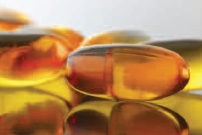Among the millions diagnosed with diabetes, some are seeking support from dietary supplements. But how many exactly? “The National Health Interview Survey recently found that 22 percent of people with diabetes use some type of herbal therapy, while another study found that 31 percent use dietary supplements,” says Dallas Clouatre, Ph.D., consultant for R&D to Jarrow Formulas, Inc., Los Angeles, CA (1).
It’s hard to say how to interpret these numbers, as Clouatre adds that it’s not clear how deep this supplement usage goes, or how elastic the market is. How many more people would even consider supplements for diabetes support? Some industry insiders believe the numbers will trend up. “Supplement sales in this category are expected to grow significantly over the next two years,” says Annie Eng, founder and CEO of HP Ingredients, Bradenton, FL.
The “Diabetes” Supplement Conundrum
Marketers have come up with many strategies to abide by U.S. Food and Drug Administration (FDA) regulations for this category. But how it all shakes out for consumers is still an evolving question.
“Due to FDA language restrictions, just the mere mention of ‘diabetes,’ a class of disease, is verboten,” says Mitch Skop, senior director of new product development, Pharmachem Laboratories Inc., Kearny, NJ. This state of affairs leaves marketers to dance around certain types of claims while hoping consumers recognize that a product is really intended to help them with their issue, say Don VerHulst, M.D., chief science officer of INBalance Health Corp., Wayland, MI, and Bob Serulla, president and CEO.
Skop says that the labeling and marketing of 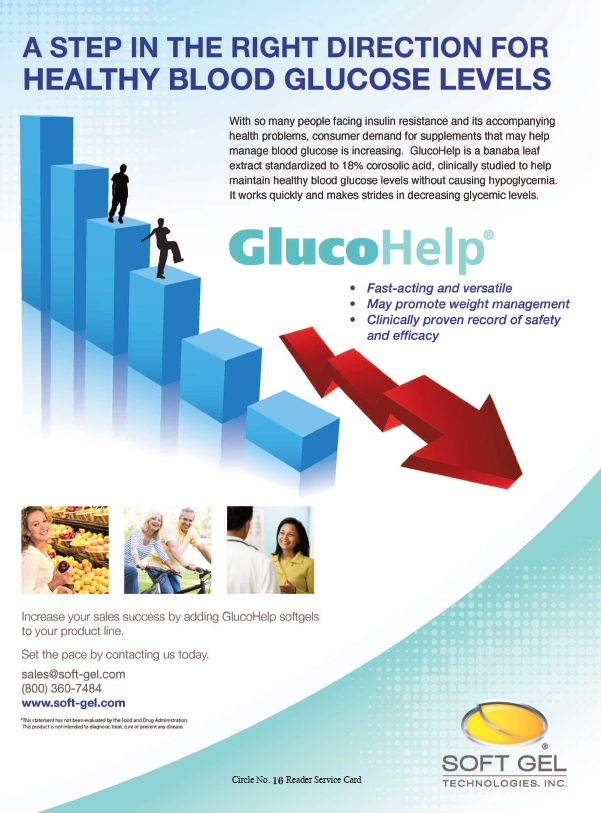 these products usually sticks to language like “blood sugar support” and “supporting healthy blood sugar function.” He adds that consumers respond well to this angle. According to Paul Dijkstra, CEO of InterHealth Nutraceuticals, Benicia, CA, ingredients with clinical evidence of a benefit to blood sugar or insulin regulation can best take advantage of this product positioning. Manufacturers of these ingredients, he says, must look closely at the science to see exactly how they can position the product for consumers, and what structure/function claims can be used in marketing material and on the label.
these products usually sticks to language like “blood sugar support” and “supporting healthy blood sugar function.” He adds that consumers respond well to this angle. According to Paul Dijkstra, CEO of InterHealth Nutraceuticals, Benicia, CA, ingredients with clinical evidence of a benefit to blood sugar or insulin regulation can best take advantage of this product positioning. Manufacturers of these ingredients, he says, must look closely at the science to see exactly how they can position the product for consumers, and what structure/function claims can be used in marketing material and on the label.
Consumers frequently search the Internet for supplements to help with metabolic syndrome, blood sugar management, healthy blood sugar support, etc., according to Eng.
Manufacturers have the opportunity to formulate supplements that can help at-risk consumers in their attempt to avoid metabolic syndrome and diabetes, as well as products that can benefit those already struggling with a disorder, says Steve Holtby, president and CEO of Soft Gel Technologies, Inc., Los Angeles, CA. Various natural ingredients have been used for these purposes, and several different approaches to the issue have been marketed. Holtby says products are often marketed to help maintain a healthy body weight, improve insulin function, maintain healthy blood glucose levels and prevent oxidative stress.
Clouatre notes that tying blood sugar issues to weight loss makes sense, as many diabetics are overweight or obese, especially in Western countries. Blood sugar products also typically utilize other reference points, including energy levels, he says.
This is where talk of the “blood sugar blues” and getting off the “blood sugar roller coaster” come in. Food cravings and binge eating are part of the same vicious cycle. “Hence, weight loss, hunger and energy are common topics that overlap with diabetes and blood sugar management,” Clouatre says. Looking at the blood sugar control market as a whole, Dijkstra points out that meal replacements are a big driver currently.
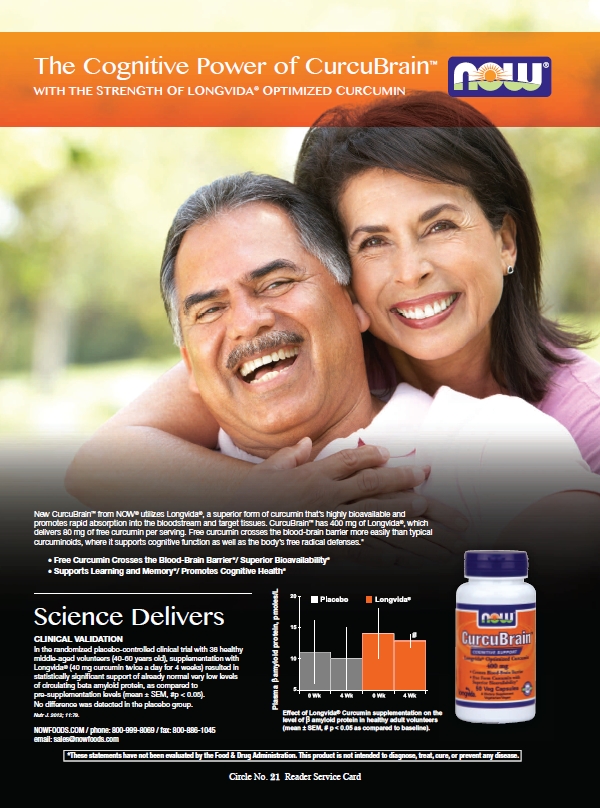 Sports supplements also spill over into blood sugar support. A number of supplements proposed to help with blood sugar are also being utilized by athletes to improve the uptake of key nutrients like carnitine and creatine, Clouatre explains.
Sports supplements also spill over into blood sugar support. A number of supplements proposed to help with blood sugar are also being utilized by athletes to improve the uptake of key nutrients like carnitine and creatine, Clouatre explains.
But the market is still best characterized by its central message of “blood sugar management,” he says. Clouatre also notes FDA’s position that companies should only state products may help individuals with blood sugar “already in the normal range,” as opposed to implying they can help someone with out-of-control blood glucose.
Amadee Bender, president of market research firm Amadee+Company Inc., Bay Harbor Islands, FL, explains that the progression of type-2 diabetes can’t be reversed. Slowing the progression of blood sugar dysfunction is important, however, since once someone needs insulin, there is usually no going back, he says. Therefore, Bender says the best approach for the industry is to emphasize a preventative mindset that includes diet and exercise.
Despite the already established strategies for marketing supplements in this category, Jay Levy, director of sales at Wakunaga of America, Mission Viejo, CA, argues the market is still in its infancy. “As new ingredients are identified and studied, supplement manufacturers will look for novel new ways to reach potential customers,” he says.
What consumers should know… Consumers seeking help with their condition may not know how supplements can benefit them, and what approaches are best suited to them. Here are few perspectives on diabetes with which consumers should get acquainted.
1) It’s all related. More consumers are becoming aware of the issue diabetes represents, says Skop, and most at least know a friend or family member who struggles with their blood sugar. But unfortunately, he says, many have yet to understand that elevated body weight, cholesterol, triglycerides, glucose and insulin together constitute a condition we call metabolic syndrome.
2) Stress and adrenal health matter. Most people with diabetes struggle with their energy and can often become stressed more easily. Lou Paradise, president and chief of research of Topical BioMedics, Inc., Rhinebeck, NY, says that the adrenal glands are involved with the pancreas and its beta cells, which regulate insulin levels. He believes adrenal fatigue and the connections between the adrenals, pancreas and thyroid are often left out of diabetes discussions.
3) It takes sacrifice. VerHulst and Serulla say that though most are aware of the primary role of diet, many will not relinquish the sugar and carb-filled foods to which they are accustomed.
4) Supplements are your friend. “Recent 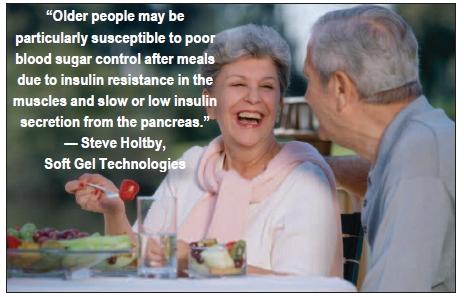 trends have shown that people are moving toward natural ingredients for managing their blood sugar levels, however, the use of pharmaceutical drugs is still strong in the market,” says Anurag Pande, Ph.D., vice president of scientific affairs at Sabinsa Corporation, East Windsor, NJ. Supplements provide a wide range of options for those with diabetes or pre-diabetes, he says, including herb/mineral complexes and others that will be discussed later.
trends have shown that people are moving toward natural ingredients for managing their blood sugar levels, however, the use of pharmaceutical drugs is still strong in the market,” says Anurag Pande, Ph.D., vice president of scientific affairs at Sabinsa Corporation, East Windsor, NJ. Supplements provide a wide range of options for those with diabetes or pre-diabetes, he says, including herb/mineral complexes and others that will be discussed later.
5) Nutritional factors. One risk consumers may be unaware of stems from oral anti-diabetic agents like Glucophage and DiaBeta, as Holtby says they may deplete folic acid and vitamin B12. “Diabetics have higher needs for virtually all nutrients, especially vitamins C, E, and B complex, magnesium and chromium. A high-potency multivitamin and mineral product would be recommended,” he says. However, for those who have a diagnosed condition and are on medication, Clouatre emphasizes that the issues of drug interaction and over-treatment will enter the equation when considering supplements.
6) No quick fix. Levy says consumers should understand that though a magic bullet would be nice, supplements are just one tool they can use to manage blood sugar levels effectively. “It’s important to make them aware that supplements alone—no matter how effective—aren’t a ‘get out of jail free’ solution to prevent or reverse diabetes, pre-diabetes or metabolic syndrome,” he says.
7) Time is of the essence. Most consumers, Dijkstra believes, don’t begin looking for a blood sugar control supplement until they are having issues with their blood sugar. “The supplement industry would like to educate consumers on the importance of maintaining healthy blood sugar. I don’t believe there is enough education being done at this point,” he says.
8) We’re all at risk. We must also recognize the extent of the risks faced by the overall population. “Consumers often do not understand that even moderately elevated blood glucose levels are problematic; this is not just a problem for individuals that are diagnosed with diabetes,” says Kira Schmid, N.D., associate director of scientific affairs at Life Extension, Fort Lauderdale, FL. She points to her company’s book Disease Prevention and Treatment 5th Edition, which contains information on the integrative management of elevated blood glucose, as an example of the type of resource consumers need to engage with.
…and how to tell them. The industry needs to ramp up its education efforts toward diabetes sufferers while staying away from the realm of medical advice, says Paradise.
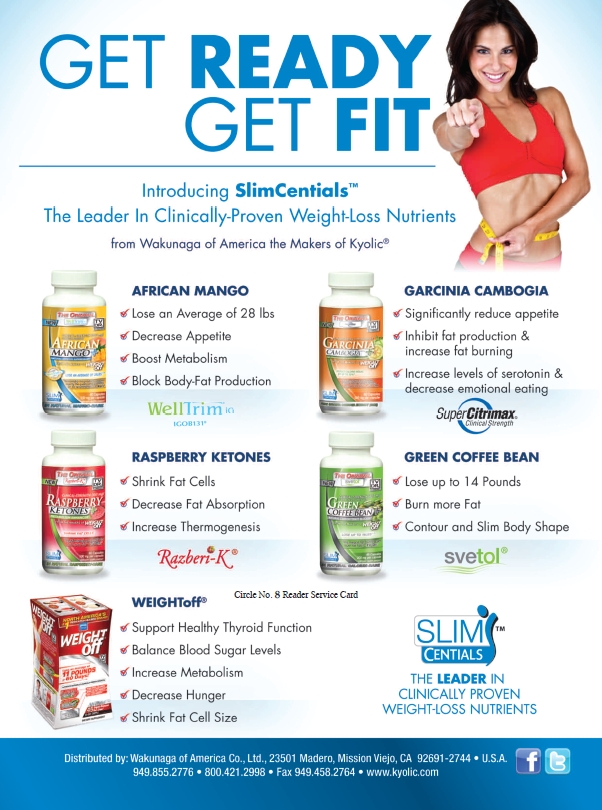 Reaching consumers with this information as marketers and retailers can be tricky, but Eng suggests the direct route, as in direct mail. Educational materials sent via the mail to the older demographic can be effective, she says, in part because they can be given the opportunity to learn about the studies and science behind supplements.
Reaching consumers with this information as marketers and retailers can be tricky, but Eng suggests the direct route, as in direct mail. Educational materials sent via the mail to the older demographic can be effective, she says, in part because they can be given the opportunity to learn about the studies and science behind supplements.
Skop believes that as the trend of learning about diabetes and related conditions continues, and as baby boomers get past middle-age, this supplement category will grow significantly. Options for retailers, marketers and ingredient suppliers to reach consumers are plentiful with social media and the Internet. Most adults, Skop says, research on the Internet, and many are on social media. Due to the immediacy of these interactions, which can include educational materials with links to trusted medical outlets, consumers can easily learn where they fall on the risk spectrum.
“Retailers are encouraged to find local medical experts to bring in for in-store seminars, help write newsletters and network,” Skop says. Medical advice and explanations should not be coming from retailers, he adds, but it is perfectly legal for physician experts to engage customers this way.
Research, Insights and Top Supplements
Diabetes and related conditions are quite complex, so it’s not surprising that the impact of supplements sounds intricate as well. Speaking of the ways phytochemicals can affect metabolic pathways, Bender says, “They affect glucose metabolism (glycolysis, Kreb’s cycle), pentose phosphate pathways, glycogenesis, glycogenolysis, gluconeogenesis and absorption of glucose via the alimentary canal, and increase insulin release, production and efficacy.”
Beginning our tour of these supplements and their benefits is a proprietary combination of special forms of L-arabinose and chromium picolinate (Prenulin from Pharmachem). Skop says the L-arabinose acts as a sucrase blocker, which inhibits the digestion of sugar. Studies show the ingredient lowered circulating glucose and insulin after consumption of 70 grams of sucrose (2).
Chromium is needed for the efficient metabolism of carbohydrates and fats, according to Levy, and it helps the body respond properly to insulin. Chromium picolinate increases insulin sensitivity in several ways, says Holtby: increasing the number of insulin receptors, increasing insulin binding, increasing insulin receptor phosphorylation, and by increasing GLUT4 translocation (which helps shuttle glucose into cells).
“Since many people interested in supporting 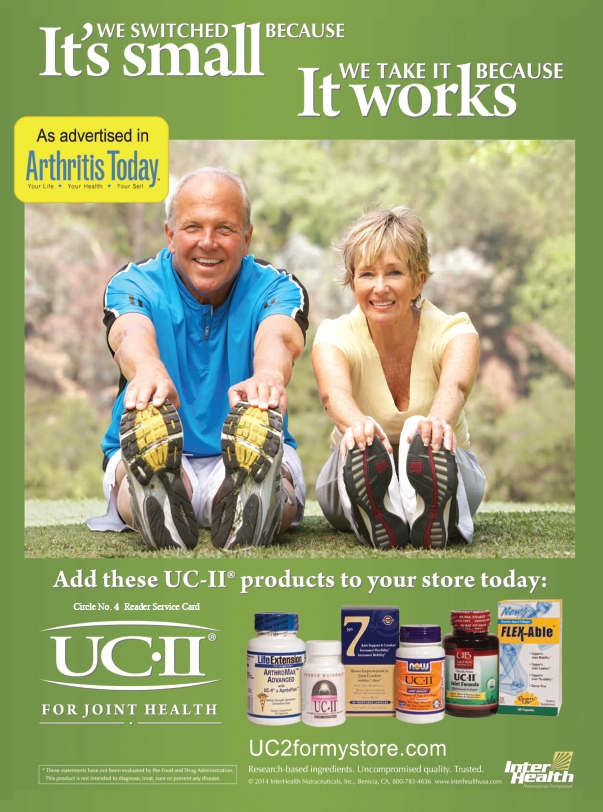 their blood sugar follow a very low-calorie diet, it may be beneficial to supplement with a multivitamin or even a standalone chromium to address possible nutrient deficiencies,” says Dijkstra. He says his company’s chromium polynicotinate ingredient (ChromeMate) works by supporting balanced blood sugar, aiding in fat loss and maintaining lean body mass.
their blood sugar follow a very low-calorie diet, it may be beneficial to supplement with a multivitamin or even a standalone chromium to address possible nutrient deficiencies,” says Dijkstra. He says his company’s chromium polynicotinate ingredient (ChromeMate) works by supporting balanced blood sugar, aiding in fat loss and maintaining lean body mass.
These latter two are important, as reaching and maintaining a healthy weight can lead to healthy blood sugar levels, Dijkstra says. He adds that research shows a weight management benefit for the ingredient in combination with a Garcinia cambogia extract (Super CitriMax from InterHealth).
According to Pande, the role of probiotics in diabetes management was illustrated in a recent animal study. A strain of Bacillus coagulans (LactoSpore from Sabinsa) used in combination with cinnamon extract helped regulate of cholesterol and blood sugar levels, among other benefits (3). Pande says that growing evidence suggests intestinal microbiota influence intestinal tissues in ways relevant to diabetes.
The main mechanism of action for cinnamon, according to information provided by Bender, is the promotion of insulin signaling. Holtby adds that cinnamon also possesses antioxidant properties.
On the role of antioxidants and inflammation in diabetes, Holtby says, “Inflammation is an important factor in the development of insulin resistance and metabolic syndrome. Bioflavonoids like quercetin, resveratrol and polyphenols have natural anti-inflammatory properties and may offer protection against metabolic syndrome.”
Andreas M. Papas, M.Sc., Ph.D., on behalf of A.C. Grace Company, Big Sandy, TX, says compounds that decrease inflammation and reduce oxidative stress are important in diabetes management and in reducing the risk of complications (more on the complications of diabetes later). Vitamin E is one example, including its natural tocopherol and tocotrienol forms. “Emerging research increases our understanding of the anti-inflammatory and antioxidant properties of the tocopherols and tocotrienols comprising vitamin E and their potential in the management of diabetes,” Papas says.
Beyond such commonly touted supplements as cinnamon, chromium, omega-3s and carbohydrate digestion inhibitors like white bean and seaweed extracts, Clouatre says several herbs hold interest. One bitter melon extract (Glycostat from Glykon Technologies), in a study cited by Clouatre, was found to lower blood glucose in diabetic rats and help regulate it in healthy rats (4).
Bitter melon may benefit metabolic syndrome in several ways, according to Levy. It may improve the insulin sensitivity of cells, enhance the delivery of blood sugar and, in a similar fashion to exercise, activate a protein that regulates glucose metabolism.
 Clouatre also touts a specific form of hydroxycitric acid (HCA) extracted from Garcinia cambogia. Potassium-magnesium hydroxycitrate (HCActive from Jarrow Formulas) has been shown to aid insulin with blood sugar regulation, while other forms of HCA have not shown the same significant effects, he says.
Clouatre also touts a specific form of hydroxycitric acid (HCA) extracted from Garcinia cambogia. Potassium-magnesium hydroxycitrate (HCActive from Jarrow Formulas) has been shown to aid insulin with blood sugar regulation, while other forms of HCA have not shown the same significant effects, he says.
An Ayurvedic herb, Pterocarpus marsupium (also known as the Indian kino tree), has a long history of use for its blood sugar lowering effects, says Pande. “In recent times, studies on the various extracts of Pterocarpus marsupium have gained lots of attention from researchers and media,” he says, adding that the herb is a focus at his company, as it has recently acquired two patents for Pterocarpus relating to blood sugar support.
Schmid says phloridzin, a polyphenol found in fruit trees, can help maintain health blood sugar by targeting carrier protein SGLT1 (which helps block the absorption of glucose from the small intestine into the bloodstream) and by targeting carrier protein SGLT2 (which leads to increased glucose elimination via urine).
Transglucosidase, Schmid explains, is an enzyme that converts starches into prebiotic fiber in the digestive tract. “Consuming this enzyme with starchy meals helps reduce the flood of glucose that enters the bloodstream following carbohydrate digestion,” she says. She also describes sorghum bran extract, which can help make blood sugar through four mechanisms: balancing the rate of sugar manufacture in the liver, promoting insulin sensitivity, regulating PPAR-gamma (“a metabolic thermostat controlling glucose metabolism”) and regulating the enzyme alpha-amylase, which controls the breakdown of sugar found in starch.
Several actions are also associated with mulberry leaf extract, Schmid says. In addition to promoting insulin sensitivity and modulating the alpha-glucosidase enzyme (which is also involved in starch digestion), it supports glucose transporter GLUT4 (which moves glucose out of the bloodstream and into cells).
The net result for one branded mulberry leaf extract (MoruCel from Hill Pharma Inc.), is slower absorption of sugar into the bloodstream, according to VerHulst and Serulla. “This extract actually lowers the glycemic index of a carbohydrate containing meal and minimizes blood sugar spiking,” they say. It is valuable, they add, not only for its glucose management benefits but because by balancing insulin levels, it can help inhibit fat storage.
Research into a proprietary bergamot extract (Bergamonte from HP Ingredients), cited by Eng, found that it lowered fasting plasma glucose significantly in subjects with metabolic syndrome and non-alcoholic fatty liver disease (5). She also cites a study on a maqui berry extract (Delphinol, distributed in North America by HP Ingredients), which showed a reduction in postprandial (after meal) blood glucose spikes in individuals with impaired glucose regulation (6).
|
Products and Ingredients
The following products and ingredients for metabolic syndrome and blood sugar management are available from companies interviewed in this feature. |
Salacia is another botanical that Levy says can enhance blood sugar stability, even after a high-carbohydrate meal. Compounds in salacia extract work in the small intestine by inhibiting sugar-digesting enzymes. He also emphasizes aged garlic extract (AGE) for its benefits in this category. Elevated blood sugar can lead to the formation of harmful advanced glycation end products, and AGE inhibits their formation, he says. AGE is a powerful antioxidant, and therefore also reduces the formation of free radicals, which play a role in metabolic syndrome and type 2 diabetes.
Paradise lists astragalus root, Cordyceps, Eleuthero (Siberian ginseng) and Rhodiola rosea as options for adrenal support, especially for those who may be pre-diabetic.
There are other insights on diabetes and its risk factors that consumers can benefit from understanding. The impact of weight management has been touched upon, but VerHulst and Serulla want to emphasize the vicious cycle inherent to this risk factor. Blood sugar spikes lead to more toxic belly fat, which means more insulin resistance and even higher blood sugar. “This insulin resistance cycle must and can be broken to successfully attack the cause of diabetes and metabolic syndrome,” they say. A basic principle to follow is “feed the pancreas, starve the fat,” according to VerHulst and Serulla, and a balanced daily multivitamin and mineral supplement, with a focus on the nutrients the pancreas needs, is a good foundation.
“One of the more interesting lines of investigation into diabetic metabolism involves the circadian rhythm and fasting,” Clouatre says. We’ve long known that blood sugar tends to rise later in the day, and that glycemic control can be impaired in the evening in those with diabetes or prediabetes (8). This suggests, he says, that caloric restriction may help diabetics. Clouatre tells us that in a study on primates, researchers used both caloric restriction and supplementation with resveratrol, which is thought to imitate the effects of caloric restriction on the body. They both produced reductions in an insulin resistance index, caloric restriction by 81% and resveratrol by 53%, after 33 months (9).
A recent study brings to the forefront a lifestyle risk people need to keep in mind, even if it is a somewhat intuitive concept. Papas cites the research, out of the University of Leicester, which found that sitting for long periods of time increases an individual’s risk of diabetes, heart disease and death (7). So as customers are considering their supplement options, they should also be reminded to keep moving.
Dealing with the Complications
Many of the difficult side effects and conditions that diabetes can cause may benefit from supplements, and in some cases topical products. It is the damage dealt by consistently elevated blood sugar that is responsible for many of these issues. As Papas details, the same anti-inflammatory compounds that can help with metabolic syndrome directly may offer protection against its complications as well. Reducing oxidative stress, when paired with lifestyle modifications, can dramatically lower the risk of diabetic complications, Papas explains.
One primary complication is cardiovascular disease, for which Papas tabs omega-3s, vitamin E, CoQ-10, lycopene and astaxanthin for synergistic support.
Nerve damage (neuropathy) can occur when diabetes damages the capillary vessels that feed nerves, often in the legs. Nerve damage in the feet can lead to serious complications, and damage to nerves in the digestive system can cause nausea, diarrhea and constipation, says Papas. In men, neuropathy can lead to erectile dysfunction. He recommends the tocotrienol forms of vitamin E, omega-3s and alpha-lipoic acid (ALA) for help with neuropathy.
“Diabetic neuropathy is one of the most common complications of diabetes and may affect approximately 50% people with diabetes,” says Pande. In addition to ALA, strong antioxidants like the curcuminoids may be helpful with neuropathy, he says.
|
Check out Steve Lankford's interview with Dr. Richard Anderson about Cinnulin PF, a clinically studied ingredient for blood sugar support. Click above to listen, and read a summary and check out the transcript here. |
Eye damage (retinopathy) can occur if blood vessels in the retina are damaged, and blindness can sometimes result. Glaucoma and cataracts are more common in diabetics, too. Papas says the Age-Related Eye Disease Study (AREDS) showed the benefits of a formulation of vitamins C and E, beta-carotene, zinc and copper for those with age-related macular degeneration. The second version of the AREDS study added lutein and zeaxanthin and the omega-3s DHA and EPA to the formula.
Kidney damage (nephropathy) can result in kidney failure or kidney disease, which frequently requires dialysis or a transplant. Papas notes that research shows vitamin E gamma-tocopherol and omega-3 DHA can decrease inflammation in kidney dialysis patients. Risks for other chronic diseases, such as osteoporosis, Alzheimer’s, depression and some forms of cancer, are also increased with diabetes. Investigations into the ways antioxidant compounds may benefit these conditions are ongoing, he says.
Skin and mouth conditions, including bacterial and fungal infections, ulcers and gum infections, are also a frequent complication. In addition to the oral supplement options already discussed, Papas says topical applications that reduce inflammation can help promote wound healing and reduce scarring.
Mark Smith, director of marketing and sales for Perfecta Products Inc., North Lima, OH, maker of the Zim’s product line, describes his company’s topical formula designed for the skin issues diabetes can cause. Using ingredients like aloe vera, arnica, myrcia oil and Canadian willowherb, it helps sooth, moisturize and protect skin, especially finger tips and feet, where people with diabetes can experience dryness.
The topical pain relief and healing cream products from Paradise’s company (Topricin) can help detoxify the areas to which they are applied. They then assist the body in its efforts to restore normal oxygen-rich blood flow to cells, Paradise says. People with diabetes, he explains, are often challenged with compromised healing processes and the toxins that build up from excess glucose. The nerve damage that out-of-control blood sugar can cause can hinder the micro capillaries that carry blood to cells. “The burning pain of neuropathy is very often the result,” he says.
“People with neuropathy have indicated that before Topricin, it felt like someone was sticking a thousand pins in their feet,” Paradise says, adding that topical products like this may help people lessen their dependency on oral pain medications.
The Age Factor
Diabetes is well-documented to occur more frequently in older individuals. “In fact, the American Diabetes Association mentions age as one of the four non-modifiable risk factors that can contribute to a person’s chances of having diabetes,” with the others being race, gender and family history, says Pande.
The questions are why and, perhaps more importantly, what can be done about it. One main line of thought is that risk factors simply accumulate or worsen over time (e.g., an older overweight person has been subject to that risk factor longer than a younger person). Another angle with some evidence behind it is that biological changes specific to old age make diabetes more likely.
Two age-associated disturbances in carbohydrate metabolism are reduced insulin sensitivity in muscle, liver and fat and impaired insulin secretion by pancreatic beta cells, says Levy. Eating, therefore, becomes a riskier affair. “Older people may be particularly susceptible to poor blood sugar control after meals due to insulin resistance in the muscles and slow or low insulin secretion from the pancreas,” says Holtby. A reduced level of physical activity as we age may also play a role, Levy adds.
Eng notes a relationship between diabetes and Alzheimer’s disease. She says Alzheimer’s is now sometimes referred to as type-3 diabetes, as there is growing evidence that insulin dysfunction is a factor in Alzheimer’s-type neurodegeneration.
Many theories abound about the process of aging in general, some of which are mutually contradictory, according to Clouatre. One notion is that the energy pathways of cells develop a sort of misalignment as we age. This mitochondrial dysfunction may lead to reduced metabolic flexibility, Clouatre explains.
Other factors are considered by VerHulst and Serulla. Eating habits can change with age, as appetite decreases, and oftentimes consumption of nutrient-dense foods like fruits and vegetables goes down. Stomach acid production also declines with age, making digestion less efficient. There is also usually a decrease in lean muscle mass coupled with an increase in fat, which contributes to insulin resistance.
Years of high-carb and high-sugar diets, Skop says, are presumably a reason for the uptick in cases among older people. The daily stress on the pancreas to release large amounts of insulin, needed to ferry excess blood sugar into cells, causes significant wear and tear, he suggests.
It is this excess blood sugar that leads to some of the serious side effects of diabetes, according to Bender. “This excess glucose is converted into various compounds and also into free radicals, which damage the vital organs and organelles,” he says.
Products with high antioxidant capacity could help reduce mitochondrial oxidative stress and curtail diabetes risk with age, says Eng. The maqui berry and bergamot extracts already discussed, she says, are both antioxidants that act on the AMPK pathway. “AMPK regulates systemic and cellular energy status. AMPK activation improves blood glucose homeostasis, lipid profiles and blood pressure,” she explains.
One option to protect against mitochondrial decline, says Clouatre, is the flavonoid apigenin. Other supplements that may fit the bill include resveratrol, lipoic acid and L-carnitine. Chromium, Clouatre adds, might help maintain insulin receptor response levels.
VerHulst and Serulla suggest that a daily multivitamin is even more important as we get older, and that consistent exercise can help too.
Simply put, diabetes is a degenerative disease, the risk of which increases as we age, says Bender. It is up to nutraceutical companies, he feels, to devise science-based options that can help slow its progression, as consumers do not have the knowledge or the data to do so themselves.
While supplements can help with digestion and insulin sensitivity in aging people, Levy argues they must be part of a healthful and often low-carb diet, as well as a comprehensive exercise program that fits an older individual’s lifestyle and physical abilities. He states, “Because many people are often set in their ways, particularly as they age, it is important that supplement manufacturers and natural health media continue to educate and encourage consumers toward a healthier lifestyle and the targeted use of supplements to support healthy blood sugar levels.” WF
References
1. “Herbs, Supplements and Alternative Medicines,” American Diabetes Association, Feb. 20, 2014, http://www.diabetes.org/living-with-diabetes/treatment-and-care/medication/other-treatments/herbs-supplements-and-alternative-medicines, accessed June 26, 2014.
2. G.R. Kaats, et al., “A Combination of L-arabinose and Chromium Lowers Circulating Glucose and Insulin Levels after an acute oral sucrose challenge,” Nutr. J. 10(5), 42 (2011).
3. V. Vaclav and V. Jana, “Physiological Effects of a Combination of Cinnulin with Probiotics,” Amer. J. Immun. 9(4), 103-109 (2013).
4. D.L. Clouatre, S.N. Rao, H.G. Preuss, “Bitter Melon Extracts in Diabetic and Normal Rats Favorably Influence Blood Glucose and Blood Pressure Regulation,” J. Med. Food. 14(12), 1496-504 (2011).
5. M. Gliozzi, et al., “The Effect of Bergamot-Derived Polyphenolic Fraction on LDL Small Dense Particles and Non Alcoholic Fatty Liver Disease in Patients with Metabolic Syndrome,” Advances in Biological Chemistry 4(2), 129-137 (2014).
6. J. Hidalgo, et al., “Delphinol Standardized Maqui Berry Extract Reduces Postprandial Blood Glucose Increase in Individuals with Impaired Glucose Regulation by Novel Mechanism of Sodium Glucose Cotransporter Inhibition,” Panminerva Med. 56(2 Suppl 3), 1-7(2014).
7. E. G. Wilmot, et al., “Sedentary Time in Adults and the Association with Diabetes, Cardiovascular Disease and Death: Systematic Review and Meta-analysis,” Diabetologia. 55(11), 2895 (2012).
8. T. Sonnier, “Glycemic Control is Impaired in the Evening in Prediabetes through Multiple Diurnal Rhythms,” J. Diabetes Complications. Apr 12 [Epub ahead of print] (2014).
9. J. Marchal, et al., “Effects of Chronic Calorie Restriction or Dietary Resveratrol Supplementation on Insulin Sensitivity Markers in a Primate, Microcebus murinus,” PLoS One. 7(3), e34289 (2012).
Published in WholeFoods Magazine, August 2014


